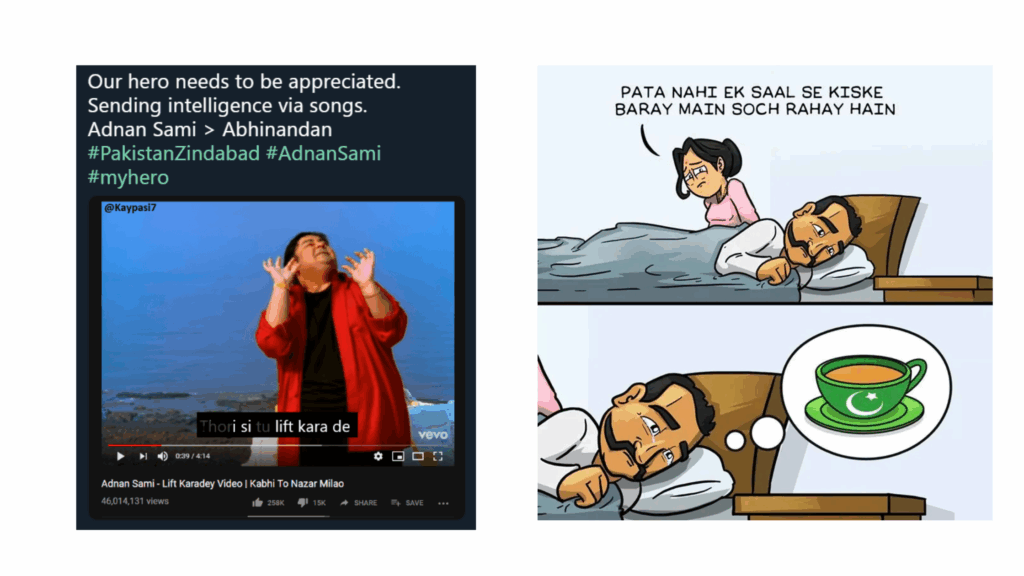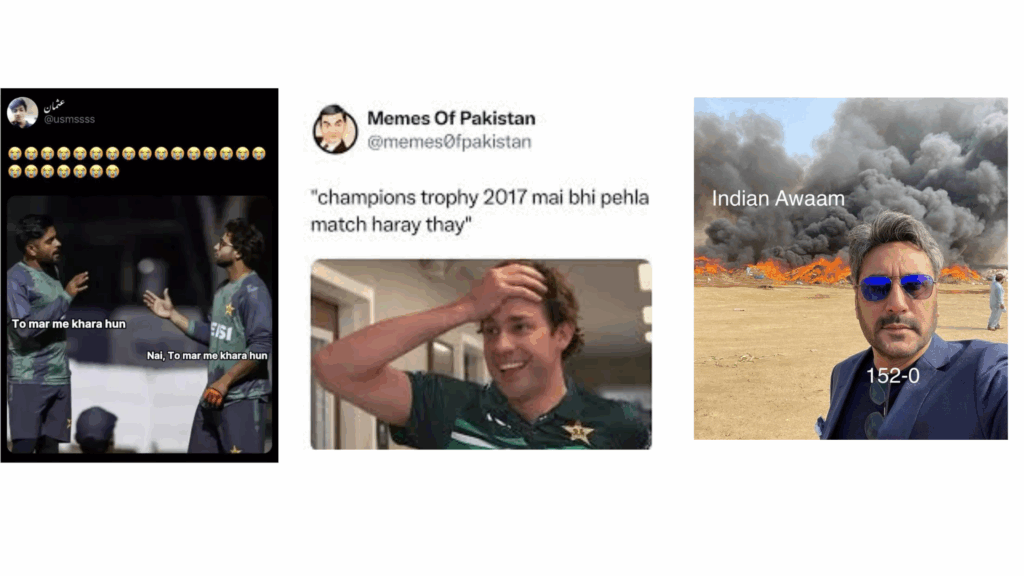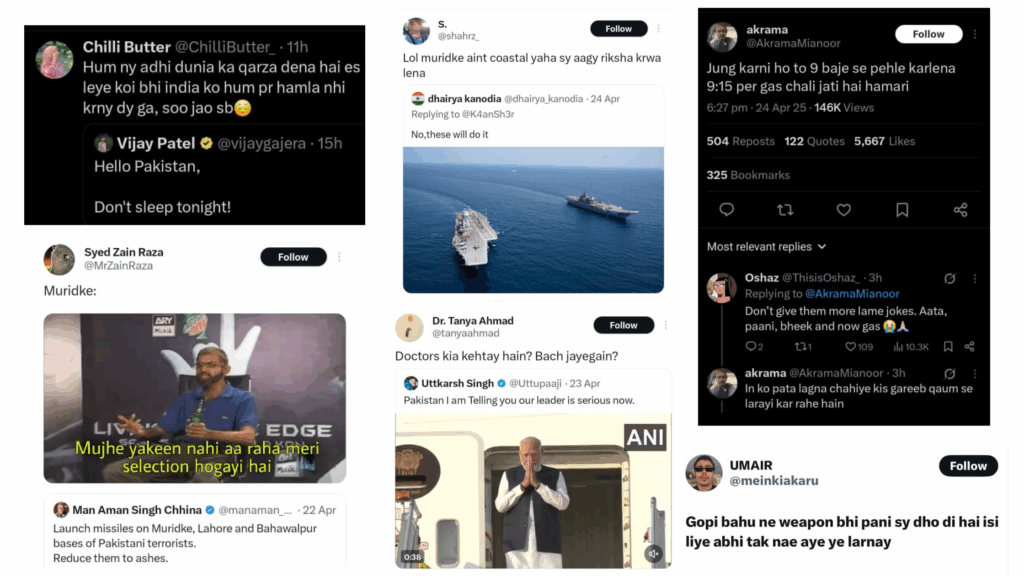
Insensitivity or Resilience? Dissecting Pakistan’s Unique Response Strategy: Memes
There are few nations in the world which continue to go through all kinds of hardships without ever catching a break. Be it a never-ending political crisis, deep-diving economy, rising poverty, natural disaster or being on the brink of a war – Pakistanis can just never find themselves without one (or multiple) of these situations facing them. The reasons and solutions for these issues are not a point of discussion in the present article, but rather the national response to these problems.
Pakistanis usually lack a cohesive, collective national response from our officials or even public given the high levels of disagreements and divisions. But one front on which Pakistanis always outshine any rival – internal or external – is humor. The power of Pakistanis to use humor and memes as a response has started gaining global traction recently in the backdrop of the ongoing India-Pakistan tensions, but this isn’t a new phenomenon, but rather a repeated pattern.
History of Humor as a Coping Mechanism in Pakistan
Memes might be a new phenomenon with the rise of social media, but Pakistanis using humor and sarcasm to fight back tensions is an old tale. From Habib Jalib’s aptly timed poetic sarcasm on the army and politicians, to Shehzad Roy’s iconic and semi-comical “Laga Rahay”, humor has always been intelligently incorporated into art to give a dark reality, a lighter touch.
Similarly, programs like Loose Talk saw the sheer brilliance of comedian Moin Akhtar and writer Anwar Maqsood, as they took up sensitive national topics and gave them a comedic tone, to send strong messages across. A similar strategy – albeit with lesser subtlety – was employed by other programs like Hum Sab Umeed Se Hein and Hasb-e-Haal.
Amongst the normal public as well, humorous poetry in the form of truck art, juggat-baazi and hilarious, spot-on comebacks are a shared experience. Even in normal conversations, one would frequently find humor as a coping mechanism against big tests and trials.
Social Media and Meme Culture
Social media – like its impact on every other sphere of life – also took this humor to another level. Cricket and political memes have long become a staple of Pakistan’s online presence, with the frequency and quality of content rising during peak seasons – world cups, championships, elections etc. Similarly, making memes out of every and any content, has become a national hobby of a sort (think “Ketchup bhi nahi le ke gayi” and “Shiza Fiza”). Many times, memes from different topics can also intersect and form new content. In short, it is a cycle that continue to thrive.
While humorous takes from Pakistani internet users are a usual occurrence, some occasions in national, political, economic and cross-border situations remain a little too iconic.
Political Memes
The 2019 Pulwama attack and the resulting rising tensions, especially the capture of Abhinandan by the Pakistani army saw some of the funniest takes from Pakistani social media champions.

Despite facing the worst form of fascism and threats at the hands of the military establishment over the past three years, Pakistani social media users have never backed out of using humor as a tool of resistance. The sentiments that the youth doesn’t have the power to express through national discourse or even elections, they convey through the memes.

Cricket
One of the favorite topics for Pakistani public to discuss in is cricket. Time and again, after all kinds of disappointments, Pakistani nation can never seem to move on from the sport. What this also provides us with are insanely epic humor moments, be it when the team wins or loses. Some ever-green cricket meme moments include the “Kohli nahi hota tujh se chase” slogan during Champions Trophy 2017 and the “Sunday kesa raha padosiyon” tweet by former Indian cricketer, Irfan Pathan, which continues to go viral every few months.
Read More: PCT and its Disastrous CT’25 Run
In recent times, Pakistan’s disastrous exit from the Cricket World Cup 2024, and the embarrassing hosting of Champion’s Trophy 2025 have been hot topics of humor amongst the general public.

The Ongoing Pakistan-India Tensions and the Humorous Takes
The Pahalgam Attack on 22nd April started a new wave of tensions between India and Pakistan. It is not a new occurrence for either of the two countries to blame any unfortunate event on the other. However, our neighbors have a unique ability of ignoring the actual event entirely, and focusing only on bringing hate to Muslims and Pakistanis. Rather than questioning their authorities about investigating the event or reasons for the security lapses, Indian population moved straight to threatening to “erase” Pakistan.
Pakistanis, never backing out of giving befitting responses, created a havoc on social media through harmless humor, which brought global attention to Pakistanis’ ability to make any situation enjoyable.

What do these Memes Symbolize?
All memes/tweets added above, and those which haven’t made the cut, have severe political and social undertones, rather than being non-sensical jokes for the sake of it. Additionally, these are clean jokes – free from sexist, racial and ethnic slurs, and also without any “maa behan ki gaaliyan” which have become more than common in humor worldwide.
This shows that the people behind these posts have enough sensitivity, maturity and awareness on the topics at hand, to form informed opinions. Moreover, rather than hate-mongering, these memes are meant to make a hard situation easier to cope with.
The Faces Behind these Posts – Insensitive or Resilient?
So the question arises – is the Pakistani youth ignorant or insensitive for making these jokes?
The answer is, no.
One can argue that making fun of serious situations shows lack of seriousness – and to a level tone-deafness – from the youth. Rather than engaging in serious methods to improve situations, the young lot is busy in joking. However, it is important to understand that the jokes are never on actual tragedies, but rather official reactions on those tragedies.
Understanding the Pakistani Youth
The current youth of Pakistan has grown up with the backdrop of the “War on Terror” and the high rates of terrorism in the country. These are people who witnessed the Army Public School (APS) tragedy while they were themselves in schools, and then continued to build their lives despite terrorist attack threats and school drills. Those who grew up in Karachi had to deal with the additional terror of MQM.
Once older, this generation entered a worrisome economy, with little to no good jobs, and an absolutely pathetic political situation, which provided them with no autonomy. They now live in a country where there are little to no hopes of building a future, as there is little room for merit or talent. With many desperate to move out, the youth finds itself in a weird fix, where their patriotism clashes with the potential to build a good life.
Additionally, they never got the freedom to express their frustration on these issues. Protests are a crime that can get you in so much trouble that it ruins your and your family’s lives. These kids – now adults – have learnt new ways of expressing their frustration, and that is in the form of humor.
These young people aren’t insensitive, they just aren’t allowed to express their sensitivity in any method other than (often) self-depreciating humor. The humor showcases the resilience of this lot. These kinds of events can lead nations into a perpetual state of trauma, but Pakistani nation still manages to rank high on the Happiness Index every year. The nation still manages to find its happiness in the smallest of things – a victory of cricket, a gold medal at Olympics, an international award or just good food.
So no, this isn’t an insensitive lot, it’s one that hasn’t allowed tragic situations to shape their lives.
A Youth to Cherish and Nurture
Our older generations need to see these positives in the youth, and allow them with the opportunities to grow to their full potential. We can see in front of us the hatred our neighbors spew at every occasion and their inability to question the narratives fed to them by their government. Ours, on the other hand, has learnt the ability to question and make their own opinions, while not allowing personal opinions to bring hate on others.
This is not to say extremist elements do not exist in Pakistan, they do. But the proportion isn’t as high as it is made out to be. Pakistan is one of the youngest nations in the world, with over 60% falling into the youth bracket. This is a lot which needs to be protected, cherished and provided with the best opportunities to let them reach their full potential.
However, the youth has been handicapped to the point where they are unable to chalk out those opportunities for themselves, given the political, economic and social policies. This is a domain on which those in power have to focus.
But until that happens, they will continue to counter hate with humor and memes!



Absolutely love this take. Very well write
such a well written take indeed our youth has the power to reach sky high